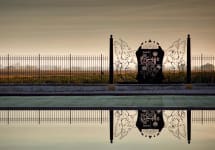Chateau Pichon-Longueville Baron 2015
- Decanter
-
Wine
Enthusiast -
Jeb
Dunnuck -
Robert
Parker -
Wilfred
Wong -
James
Suckling -
Wine
Spectator -
Connoisseurs'
Guide



Product Details
Your Rating
Somm Note
Winemaker Notes
Professional Ratings
-
Decanter
Yet another nose with standout freshness, even delicacy, but still quite youthful, mingling black fruit, spices, and spring flowers. A bit massive and still tightly wound on the palate, the wine has impressive tannic density and power but also finesse, apparent in the airborne, minty finish. Its terroir expression will need some time to come fully to the fore, but this is a superb wine.
-
Wine Enthusiast
This is one of the great successes of this vintage. It is generous and rich while also solid and structured. The combination of the essence of black currant and the elegant tannic structure are superb. This is a wine for serious aging and the wine should not be broached before 2026.
Cellar Selection -
Jeb Dunnuck
Reminding me of the 1990, the 2015 Château Pichon Baron is a sensational bottle of wine made from 80% Cabernet Sauvignon and 20% Merlot that spent 18 months in 80% new French oak. Boasting a deep purple color as well as awesome notes of black raspberries, toasted spices, cassis, lead pencil shavings, tobacco leaf and building minerality, this full-bodied, concentrated 2015 has sweet tannin, a great texture, and a big, big finish. Pauillac all the way, with both opulence and finesse, forget bottles of 4-5 years and enjoy anytime over the following two to three decades. This is a match for the 2009, 2000, and 1990.
-
Robert Parker's Wine Advocate
Medium to deep garnet-purple in color, the 2015 Pichon-Longueville Baron is enticingly scented of chocolate-covered cherries, crushed red currants and mulberries with touches of baking spices, potpourri and bay leaves plus a hint of fallen leaves. Sumptuously elegant, refreshing and medium-bodied with gorgeous, expressive, perfumed red fruits and very fine, very firm tannins, it has a persistent, perfumed finish. Its remarkable intensity, freshness and very firm frame suggest a long-lived Pichon Baron, which should cellar gracefully for 30+ years.
-
Wilfred Wong of Wine.com
A masterful wine, the 2015 Château Pichon Baron navigates nicely through elegance and power. The wine's fresh red currants deftly lead into nuances of black fruits and bright minerality. On the palate, there is a firmness that makes it superbly satisfying. This wine will go down as one of the château's best wines ever. (Tasted: January 25, 2018, San Francisco, CA)
-
James Suckling
Blackberries, sweet tobacco, incense and currants. Aromatic. Medium to full body and firm, sleek tannins. Racy and refined. Shows lovely balance and finesse. Pretty now, but needs another three or four years of bottle age. Try from 2023. Reviewed in Hong Kong Chinese Wine Tasting July 2020.
-
Wine Spectator
A fresh and focused style, with a terrific beam of black cherry and black currant compote flavors. Strong graphite and black tea notes harness the finish, ending with alder and tobacco echoes. This has serious length without losing any drive along the way. Best from 2022 through 2038.
-
Connoisseurs' Guide
Sensationally rich though it may be, this spellbinding wine earns its third star by way of its impeccable crafting and polish. It is full and wonderfully fleshy in feel, but its potency comes with a sense of unexpected grace and it conveys confidence without need of swagger. Evocative of cassis, berries and optimally ripe plums, but not stopping with fruit and showing a penetrating streak of stony, graphite-like minerality along with touches of black tea and a smattering of exotic spice, it is at once fairly accessible yet has the structure to warn against overly hasty drinking. It will likely test the resolve of claret collectors who are short on patience, but six to ten years of patience is very much in order if the wine is to reach its considerable best.
Other Vintages
2022-
Jeb
Dunnuck -
Robert
Parker -
James
Suckling - Decanter
-
James
Suckling -
Robert
Parker - Decanter
-
Jeb
Dunnuck
-
James
Suckling -
Jeb
Dunnuck - Vinous
-
Wine
Enthusiast - Decanter
-
Robert
Parker -
Wilfred
Wong -
Wine
Spectator
-
Wilfred
Wong - Decanter
-
Wine
Enthusiast -
Robert
Parker -
James
Suckling -
Jeb
Dunnuck -
Wine
Spectator
-
Wilfred
Wong -
Wine
Enthusiast - Decanter
-
Jeb
Dunnuck -
Robert
Parker -
Wine
Spectator -
James
Suckling
-
Wine
Enthusiast -
Jeb
Dunnuck -
Wine
Spectator -
Robert
Parker -
James
Suckling - Decanter
- Decanter
-
James
Suckling -
Robert
Parker -
Wine
Enthusiast -
Jeb
Dunnuck -
Wine
Spectator
-
Jeb
Dunnuck -
Wilfred
Wong -
James
Suckling -
Robert
Parker - Decanter
-
Wine
Spectator
-
Jeb
Dunnuck -
James
Suckling -
Robert
Parker -
Wine
Spectator
-
Wine
Enthusiast -
Wine
Spectator -
James
Suckling -
Robert
Parker -
Jeb
Dunnuck
-
Jeb
Dunnuck -
Wine
Enthusiast -
Robert
Parker -
James
Suckling -
Wine
Spectator
-
Robert
Parker - Decanter
-
Wine
Enthusiast -
James
Suckling -
Wine
Spectator
-
Robert
Parker -
James
Suckling -
Wine
Spectator
-
Robert
Parker
-
James
Suckling -
Connoisseurs'
Guide -
Wine
Spectator -
Robert
Parker
-
Wine &
Spirits -
Connoisseurs'
Guide -
Jeb
Dunnuck -
Wine
Spectator -
Robert
Parker
-
Wine
Enthusiast -
Wine &
Spirits -
Robert
Parker
-
James
Suckling -
Wine
Spectator -
Robert
Parker -
Wine
Enthusiast
-
Wine
Spectator
-
Robert
Parker -
Wine
Spectator -
Wilfred
Wong
-
Jeb
Dunnuck -
Robert
Parker -
James
Suckling -
Wine
Spectator -
Wine
Enthusiast
-
Robert
Parker
-
Wine &
Spirits -
Robert
Parker
-
Robert
Parker -
Wine
Spectator
-
Robert
Parker -
Wine
Spectator
-
Robert
Parker - Decanter
-
Wine
Spectator
-
James
Suckling -
Wine
Spectator -
Robert
Parker
-
Wine
Spectator -
Robert
Parker

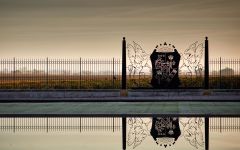

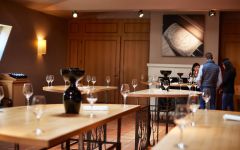
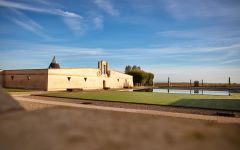
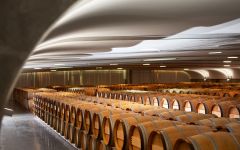
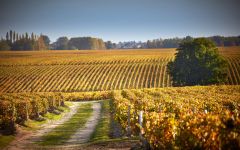
The Estate was founded in the late 17th Century. This period was known as the Grand Siecle, or "great century", in reference to Louis XIV's 1661 accession to the French throne. In 1689 Pierre Desmezures de Rauzan, an influential wine merchant and steward of the prestigious Latour and and Margaux estates, bought plots of vines close to the Latour estate to create Enclos Rauzan. These vines were part of his daughter Therese's dowry when she married Baron Jacques Pichon de Longueville in 1694, the year in which the Pichon Baron estate was founded. An illustrious estate, with an enduring reputation, was born. It remained in the same family for generations.
In 1850 the property was divided in two. Baron Raoul Pichon de Longueville's section became the Pichon Baron estate. The second section, belonging to his three sisters, became Pichon Comtesse. Baron Raoul was proud of his prestigious property, and in 1851 he commissioned the imposing chateau inspired by Renaissance architecture that we know today. This uniquely charming and romantic chateau, with its two emblematic turrets, has stood proudly at the vineyard's heart ever since. During the Universal Exhibition of 1855, the wine was classed as a Second Grand Cru Classe according to the ranking system requested by Emperor Napoleon III, who wished to showcase Bordeaux's great wines. In 1933, the Pichon de Longueville family sold the property to the Bouteiller family, who managed the chateau for over 50 years.
In 1987 the estate was bought by AXA Millesimes, whose aim is to enable great wines from the vineyards with a glorious past to achieve their full potential. An architectural competition was launched in collaboration with the Paris Pompidou Centre to provide the estate with new operational buildings. The comprehensive reconstruction of the fermenting room and cellar, and renovation of the chateau, began in 1988. Since then, the 19th century chateau's image has been
reflected in an ornamental pool stretching majestically before it.. And since 2008, its silvery expanse conceals an underground cellar, reminiscent of Jules Verne's Nautilus, with view of both the water and sky. The barrel cellar complements a production process in which excellence is paramount, in the finest tradition of great Pauillac wines.

One of the world’s most classic and popular styles of red wine, Bordeaux-inspired blends have spread from their homeland in France to nearly every corner of the New World. Typically based on either Cabernet Sauvignon or Merlot and supported by Cabernet Franc, Malbec and Petit Verdot, the best of these are densely hued, fragrant, full of fruit and boast a structure that begs for cellar time. Somm Secret—Blends from Bordeaux are generally earthier compared to those from the New World, which tend to be fruit-dominant.

The leader on the Left Bank in number of first growth classified producers within its boundaries, Pauillac has more than any of the other appellations, at three of the five. Chateau Lafite Rothschild and Mouton Rothschild border St. Estephe on its northern end and Chateau Latour is at Pauillac’s southern end, bordering St. Julien.
While the first growths are certainly some of the better producers of the Left Bank, today they often compete with some of the “lower ranked” producers (second, third, fourth, fifth growth) in quality and value. The Left Bank of Bordeaux subscribes to an arguably outdated method of classification that goes back to 1855. The finest chateaux in that year were judged on the basis of reputation and trading price; changes in rank since then have been miniscule at best. Today producers such as Chateau Pontet-Canet, Chateau Grand Puy-Lacoste, Chateau Lynch-Bages, among others (all fifth growth) offer some of the most outstanding wines in all of Bordeaux.
Defining characteristics of fine wines from Pauillac (i.e. Cabernet-based Bordeaux Blends) include inky and juicy blackcurrant, cedar or cigar box and plush or chalky tannins.
Layers of gravel in the Pauillac region are key to its wines’ character and quality. The layers offer excellent drainage in the relatively flat topography of the region allowing water to run off into “jalles” or streams, which subsequently flow off into the Gironde.
